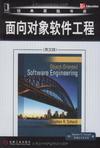面向对象软件工程
出版时间:2009-3 出版社:机械工业出版社 作者:Stephen R.Schach 页数:558
Tag标签:无
前言
The wheel has turned full circle.In 1988, I wrote a textbook entitled Software Engineering. Virtually the only mention of the object-oriented paradigm in that book was one section that described object-oriented design.By 1994, the object-oriented paradigm was starting to gain acceptance in the software industry, so I wrote a textbook called Classical and Object-Oriented Software Engineering. Six years later, however, the object-oriented paradigm had become more important than the classical paradigm. To reflect this change,I switched the order of the two topics in the title of the textbook I wrote in 2000,and called it Object-Oriented and Classical Software Engineering.Nowadays, use of the classical paradigm is largely restricted to maintaining legacy software. Students learn C++ or Java as their first programming language,and object-oriented languages are used in subsequent computer science and computer engineering courses. Students expect that, when they graduate, they will work for a company that uses the object-oriented paradigm. The object-oriented paradigm has all but squeezed out the classical paradigm. And that is why I have written a textbook entitled Object-Oriented Software Engineering.
内容概要
本书从面向对象范型出发对软件工程进行重新演绎。全面、系统、清晰地介绍了面向对象软件工程的基本概念、原理、方法和工具,通过实例说明了面向对象软件开发的整个过程。 本书分为两个部分:第一部分介绍了面向对象软件工程的基本理论;第二部分以工作流的形式介绍了软件生命周期。
作者简介
(美)沙赫(Stephen R.Schach)1972年获魏兹曼科学院物理学理科硕士学位,1973年获开普敦大学应用数学博士学位。目前任教于美国范德比尔特大学计算机科学系。他著有多部有关软件工程、面向对象软件工程、面向对象系统分析与设计的教材。他还在国际上广泛讲授软件工程方面的
书籍目录
PARTONE INTRODUCTION TO OBJECT-ORIENTED SOFTwARE ENGINEERING l Chapter l The Scope of object-Oriented Software Engineering 学习目标 1.1 Historical Aspects 1.2 Economic Aspects 1.3 Maintenance Aspects 1.3.1 The Modern View of Maintenance 9 1.3.2 The Importance of Post-delivery Maintenance 1.4 Requirements.Analysis.and Design Aspects 1.5 Team Development Aspects 1.6 Why There Is No Planning Phase 1.7 Why There Is No Testing Phase 1.8 Why There Is No Documentation Phase 1.9 The Obiect-Oriented Paradigm 1.10 Terminology 1.11 Ethical Issues Chapter Review For Further Reading Key Terms 习题 References Chapter 2 Software Life.Cycle Models 学习目标 2.1 Software Development in Theory 2.2 Winburg Mini Case Study 2.3 Lessons of the Winburg Mini Case Study 2.4 Teal Tractors Mini Case Study 2.5 Iteration and Incrementation 2.6 Winburg Mini Case Study Revisited 2.7 Risks and Other Aspects of Iteration and lncrementation 2.8 Managing Iteration and Incrementation 2.9 0ther Life—Cycle Models 2.9.1 Code.and.Fix Life-Cycle ModeI 2.9.2 Waterfatf Life-Cycle Modef 2.9.3 Rapid-Prototyping Life-cycle Modef 50 2.9.4 Open-Source Life-Cyle Model 2.9.5 Agile Processes 2.9 6 Synchronize.and.Stabilize Life-Cycle Model 2.9.7 Spiraf Life-Cycle Modef 2.10 Comparison of Life—Cycle Models Chapter Review For Further Reading Key Terms 习题 References Chapter 3 The Software Process 学习目标 3.1 The Unified Process 3.2 Iteration and Incrementation 3.3 The Requirements Wbrkflow 3.4 The Analysis workflow 3.S The Design Workflow 3.6 The Implementation Workflow 3.7 The Test Workflow 78 3.7.1 Requirements Artfacts 3.7.2 Analysis Artifacts 3.7.3 Design Artifacts 3.7.4 Implementation Artifacts 3.8 Postdelivery Maintenance 3.9 Retirement 3.10 The Phases of the Unifled Process 3.10.1 The Inception Phase 3.10.2 The Elaboration Phase 3.10.3 The Construction Phase 3.10.4 The Transition Phase 3.11 0ne-versus Tw0.Dimensional Life-Cycle Models 3.12 Improving the Software Process 3.13 Capability Maturity Models ……PART TWO THE WORKFLOWS OF THE SOFTWARE LIFE CYCLE
章节摘录
As explained in Section 3.13, without measurements (or metrics) it is impossible to dettect problems early in the software process, before they get out of hand. In this way, metrics can serve as an early warning system for potential problems. A wide variety of metrics can be used. For example, lines of code (LOC) is one way of measuring the size of a product (see Section 9.2.l). If LOC measurements are taken at regular intervals, they provide a measure of how fast the project is progressing. In addition, the number of faults per 1000 lines of code is a measure of software quality. After all, it is of little use if a programmer consistently turns out 2000 lines of code a month but half of them have to be thrown away because they are unacceptable. Accordingly, LOC in isolation is not a very meaningful metric.Once the product has been installed on the client's computer, a metric such as mean time between failures provides management an indication of its reliability. If a certain product fails every other day, its quality is clearly lower than that of a similar product that on average runs for 9 months without a failure.Certain metrics can be applied throughout the software process. For example, for each workflow, we can measure the effort in person-months (I person-month is the-amount of work done by one person in 1 month). Staff turnover is another important metric. High turnover adversely affects current projects because it takes time for a new employee to learn the relevant facts about the project (see Section 4.1). In addition, new employees may have to be trained in aspects of the software process; if new employees are less educated in software engineering than the individuals they replace, then the process as a whole may suffer. Of course, cost is an essential metric that must also be monitored continually throughout the entire process.A number of different metrics are described in this book. Some are product metrics;they measure some aspect of the product itself, such as its size or its reliability. Others are process metrics used by the developers to deduce information about the software process. A typical metric of this kind is the efficiency of fault detection during development,that is, the ratio of the number of faults detected during development to the total number of faults detected in the product over its lifetime.
编辑推荐
《面向对象软件工程 (英文版)》从面向对象范型出发对软件工程进行重新演绎.全面、系统、清晰地介绍了面向对象软件工程的基本概念、原理、方法和工具.通过实例说明了面向对象软件开发的整个过程。《面向对象软件工程 (英文版)》分为两个部分:第一部分介绍了面向对象软件工程的基本理论;第二部分以工作流的形式介绍了软件生命周期。包括面向对象生命周期模型、面向对象分析、面向对象设计。以及面向对象软件的测试和维护。讨论了文档、维护、复用、可移植性、测试和CASEI具等的重要性。包括了能力成熟度模型(CMM)和人员能力成熟度模型(P·CMM)的内容。与语言无关。实例代码对于C++和Java语言背景的读者同样清晰。包括600余篇当前热点研究文章、经典文献和书籍的参考文献。包含2个用于说明完整软件生命周期的运行实例,还有7个较小的实例,分别用于突出说明特定的主题。基于统一过程、Java和C++语言的完整源码可从作者网站(www.mhhe.com/schach)下载。包括5种类型的习题。分别是概念理解、项目分析、课程设计、论文研读和实例修改。
图书封面
图书标签Tags
无
评论、评分、阅读与下载
用户评论 (总计1条)
- 以一本软件工程的书籍来说,这本书做到了将抽象的原理进行详细的具体化,这对于理解软件里面很多概念是非常重要的。里面包含了很多软件里面多年积累下来的一些经验,可以说是集大成了。比如里面的团队管理的一章,能在这一本书里面读到多种的团队模式并且有详细的比较是很不容易了。
相关图书
- AutoCAD 2009中文版工程绘图实用教程
- 基于LabVIEW的数据采集与处理技术
- 老年肿瘤学
- 抑郁症
- 北京市非传统旅游资源与产业成长研究
- 为什么听不懂,为什么说不清
- 嘻哈说唱学汉语3
- 说说唱唱学汉语
- 快乐中国学汉语·新疆篇(上)
- 文化的传递与嬗变
- 中国人民大学 中国经济发展研究报告2010
- 数码设备维修从入门到精通
- 布衣文丛
- 加强党的执政能力建设研究
- 一个男人的成长
- 研究生学位论文写作笔谈
- 管理沉思录
- 3G高速数据无线传输技术
- 大众化定制与管理变革
- 帮帮我!我的老师不喜欢我
- 嵌入式硬件技术基础实验与习题解答
- 冲突
- 国王有一双马耳朵King with Horse's Ears
- 汉唐盛世的历史解读
- 1BM System x系列产品管理维护指南
